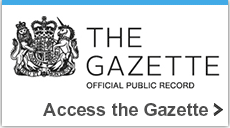Artisanal small-scale gold mining: a framework for collecting site-specific sampling and survey data to support health-impact analyses
International development in focus
- Format:
- Corporate Author:
- World Bank
- Author:
- Katherine von Stackelberg, Pamela R.D. Williams, Ernesto Sánchez
- Publisher:
- World Bank
This framework document provides a pragmatic approach for designing representative studies and developing uniform sampling guidelines to support estimates of morbidity that are explicitly linked to exposure to land-based contaminants from artisanal small-scale gold mining (ASGM) activities. A primary goal is to support environmental burden-of-disease evaluations, which attempt to attribute health outcomes to specific sources of pollution. The guidelines provide recommendations on the most appropriate and cost-effective sampling and analysis methods to ensure the collection of representative population-level data, sample size recommendations for each contaminant and environmental media, biological-sampling data, household-survey data, and health-outcome data. This framework focuses on ASGM activities that are known to use and generate mercury (Hg) as well as other metals, such as arsenic (As) and lead (Pb), depending on the specific ores being mined. A particular concern with Hg is the conversion to methylmercury (MeHg) in aquatic environments, leading to bio-accumulation and biomagnification in fish that may be locally consumed. Exposures to Hg, MeHg, and Pb are strongly associated with neuro-developmental health outcomes in children. Exposures to Hg and MeHg are also associated with neurological illnesses in adults. Exposures to Pb are associated with renal outcomes in children and adults, and cardiovascular outcomes in adults. Exposures to As are associated with neuro-developmental health outcomes in children, arsenicosis and skin disorders in children and adults, and potential cancers in adults, including skin, bladder, and lung. The primary objective of this framework is to guide research to assess the relationship between environmental contamination, exposures, and health outcomes related to a subset of contaminants originating from ASGM activities for particularly vulnerable populations (such as children) and the general population within a single household in the vicinity of ASGM sites in low- and medium-income countries. To achieve this objective, bio-monitoring and health-outcome data are linked to household-survey and environmental data (for example, soil, dust, water, agricultural products, and fish) at the individual level from an exposed population compared to individuals from an unexposed (reference) population. Data on exposures and health out
| Extent | xxii, 109p. | ISBN | 9781464818196 |
|---|---|---|---|
| Size | N/A | Price | £34.50 |
| Format | Paperback | Published | 25 Oct 2022 |
| Availability | Out of stock - available to order | Delivery | Delivery options and charges |




